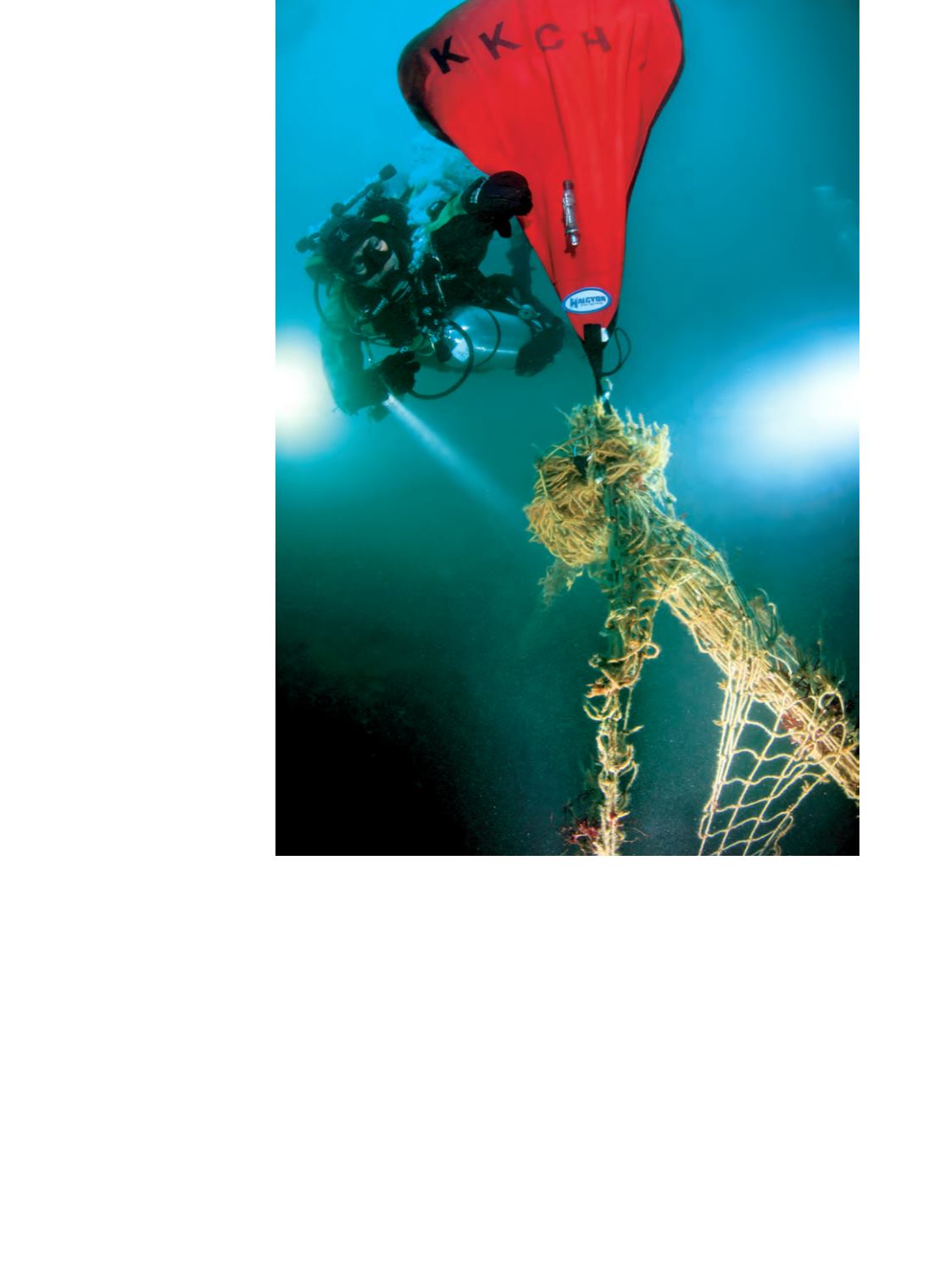
W
ith a
“vegan”
patch
on the
right sleeve of her neon-
green drysuit and a “Sea
Shepherd” patch on the
left, a black mask, double
backmounted 130s,
two bottles of deco gas,
black jet fins, heavy gloves,
an oversized orange lift
bag and a razor-sharp net
cutter, Heather Hamza
looks like some kind of
modern-day superhero.
The resemblance goes
deeper than looks.
At least once a month,
the petite, 43-year-old nurse
anesthetist turned animal-
rights activist leads a team
of volunteer technical divers
to cut and remove derelict
fishing nets, aka ghost nets,
from southern California
wrecks such as the Infidel,
a sunken commercial squid
boat that lies at 150 feet
off the backside of Santa
Catalina Island.
Hamza’s crew typically
consists of three “deep
teams” (lift-bag stagers,
net cutters and a video
crew), two or three support divers and some topside
net haulers drawn from some 50 volunteers. On a good
day, when the ever-changing currents are manageable,
the team can remove up to 2,000 pounds of abandoned
netting in the course of two 60- to 90-minute working
dives, saving countless creatures from a ghastly fate.
Unfortunately, there is no shortage of work for them do.
Every year hundreds of miles of commercial fishing
nets and traps are discarded, lost or snagged on
shipwrecks or reefs and left abandoned. They continue
to indiscriminately trap and kill sea life, scrub reefs and
smother marine habitat, hence the term “ghost fishing.”
In 2009 the United Nations Food and Agriculture
Organization (FAO) and the U.N. Environment
Programme (UNEP) estimated that there were
approximately 640,000 tons of abandoned fishing nets in
the oceans, accounting for one-tenth of all marine litter.
The nets wreak havoc on the entire marine food web.
Small fish and crabs get trapped in the nets, and then
larger animals including fish, sea birds, turtles, dolphins,
seals and sea lions swim in for a meal and also get
trapped and die. Hemp and nylon purse seine nets take
decades to degrade, while monofilament gill nets take
centuries, which vastly multiplies the nets’ killing power.
Hamza serves as the U.S. coordinator for Ghostfishing.
org, a nonprofit organization founded by two Global
Underwater Explorers (GUE) members based in
Holland. With the help of her husband, Karim, who is
a part owner of Hollywood Divers, Hamza plans and
organizes trips, recruits volunteers, works to raise public
24
|
WINTER 2014
DIVE SLATE
//
GHOST FISHING
Divers and surface
support team members
remove abandoned
fishing nets from the
Infidel near Santa
Catalina Island, Calif.
TOM BOYD


